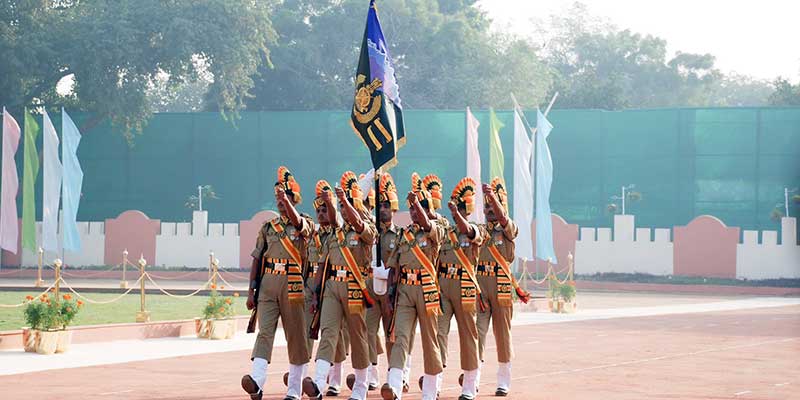- India
- Oct 24
Explainer / Indo-Tibetan Border Police (ITBP)
Prime Minister Narendra Modi greeted ITBP personnel on the occasion of the force’s Raising Day.
Indo-Tibetan Border Police
• Indo-Tibetan Border Police (ITBP) was raised in the wake of Chinese aggression in 1962 with a modest strength of four battalions. It was originally conceptualised as an integrated “guerrilla-cum-intelligence-cum-fighting force”. It evolved with passage of time into a border guarding force.
• ITBP was initially raised under the CRPF Act. However, in 1992, parliament enacted the ITBP Act and the rules there under were framed in 1994.
• Today, ITBP is guarding 3,488 km of India-China border and is manning 180 Border Out Posts (BOPs) on altitudes ranging from 9,000 to 18,750 ft in the western, middle and eastern sector of the India-China border along with Himalayas from Karakoram Pass in Ladakh to Jachep La in Arunachal Pradesh.
• The motto of the Force is “Shaurya-Dridhata-Karma Nishtha” (Valour – Determination – Devotion to Duty).
Tasks of ITBP:
1) Vigil on the northern borders, detection and prevention of border violations, and promotion of the sense of security among the local populace.
2) Check illegal immigration, trans-border smuggling and crimes.
3) Security to sensitive installations, banks and protected persons.
4) Restore and preserve order in any area in the event of disturbance.
Other major functions:
• ITBP battalions are deployed in Maoists affected areas of Chhattisgarh. The ITBP operates through five Frontier Headquarters and 15 Sector Headquarters, 56 Service Battalions, four Specialized Battalions, two NDRF Battalions and 14 Training Centers with a total sanctioned strength of 89,567 personnel.
• ITBP Battalions are also providing security to various installations of national importance throughout the country, which includes Rashtrapati Bhawan, Vice President’s House, Rumtek Monastery (Sikkim), Tihar Jail (Delhi), Lal Bahadur Shastri National Academy of Administration (Uttarakhand) and various sensitive installations in Chandigarh (Punjab) & Jammu (J&K).
• ITBP has been providing security, communication and medical cover to the pilgrims during the Annual Kailash Mansarovar Yatra since 1981. ITBP provides communication, security and medical cover to the yatries from Gunji to Lipulekh Pass and back to Gunji in coordination with the ministry of external affairs and Kumaon Mandal Vikas Nigam.
• Being the first responder for natural disasters in the Himalayas, ITBP was the first to establish seven regional response centres and carried out numerous rescue and relief operations during disasters.
• ITBP conducts a large number of medical civic action programmes in remote border and terrorist/naxal affected areas to provide free and expert medical, health and hygiene care to the civilian population in remote villages.
What is CAPF?
Central Armed Police Forces (CAPF) refers to the common nomenclature of seven security forces. It is under administrative control of the home ministry. The CAPF consists of:
1) Border Security Force (BSF)
2) Central Reserve Police Force (CRPF)
3) Central Industrial Security Force (CISF)
4) Indo-Tibetan Border Police (ITBP)
5) Sashastra Seema Bal (SSB)
6) Assam Rifles (AR)
7) National Security Guard (NSG).
The CAPF plays a vital role in guarding borders and assisting central/state governments in maintenance of internal security and in curbing other illegal/unlawful activities.
Manorama Yearbook app is now available on Google Play Store and iOS App Store

